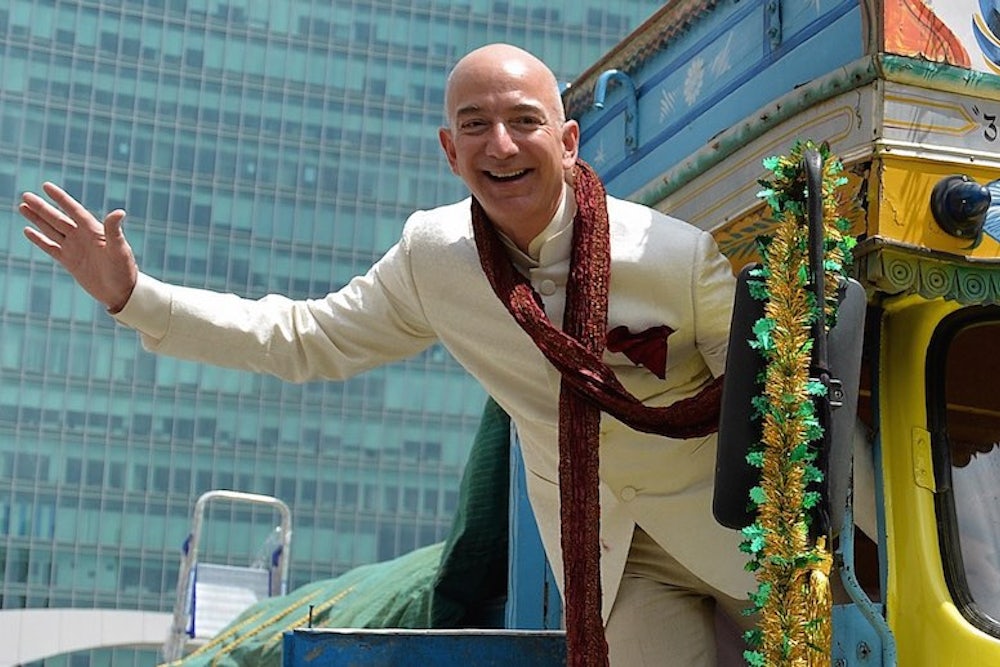At Business Insider’s annual Ignition conference Tuesday, CEO Jeff Bezos explained why Amazon's stock price keeps rising despite almost zero profits: The company continues to invest in new businesses, and Amazon’s investors are OK with that. "If you're going to take bold bets, they're going to be experiments," he said. "And if they're experiments, you don't know ahead of time if they're going to work. Experiments are by their very nature prone to failure. But a few big successes compensate for dozens and dozens of things that didn't work.”
But Amazon hit a road bump in 2014: Its stock is down 18 percent, and investors are no longer optimistic about the company’s outlook. This year has exposed the limitations of Bezos’s business strategy.
For most of Amazon’s existence, the company has been barely profitable. From 2007 through 2013, its revenues quintupled from $14.8 billion to $74.45 billion, but profits dropped from $436 million to $273 million. Note: that's billions in revenue, and just hundreds of millions in profits. Meanwhile, Amazon’s stock has consistently risen because investors didn't care about the dwindling profit margins. Bezos’s strategy worked: Amazon is now the U.S. leader in online retail. It’s so big that the editor of this magazine, Franklin Foer, wrote a cover story declaring the company a monopoly.

Then 2014 hit, and investors turned on the company. When Amazon announced Monday that it would issue new unsecured debt, Moody’s downgraded the company’s outlook to negative. There are two reasons for this change in investor sentiment.
1. Revenue growth has slowed from 40 percent in 2010 and 2011, to 27 percent in 2012, to 22 percent in 2013. This year it is projected to be between 16 and 20 percent.

2. Amazon’s newest investments aren’t paying off. The most notable failure has been the Fire phone, which has received terrible reviews. In October, the firm took a $170 million write-down loss as its inventory piled up and the company cut the cost of the phone from $200 to 99 cents. The Fire’s failure, at least so far, does not necessarily reveal a flaw in Bezos’s strategy. After all, if you make big bets, you’re going to have some major failures as well. "What really matters is that companies that don't continue to experiment —companies that don't embrace failure—they eventually get in a desperate position, where the only thing they can do is make a 'Hail Mary' bet at the very end,” Bezos said Tuesday. Of course, not all of Amazon's recent investments have failed. Fire TV, for instance, has been a success. But investors get nervous when those bets fail to pay off at the same time the core business' growth slows. And the Fire phone was a big bet that has not worked.
Matt Yglesias, then writing for Slate, predicted this in January. “Amazon gets away with relentlessly investing in the future only because, for now, investors have faith in Bezos and his strategy,” he wrote. “But that faith has been tested in the past, and it’s likely that some future convulsion in markets will cause it to wane again.” Yglesias didn’t see any reason for this strategy to fail soon, much less this year. “For the foreseeable future, the party can—and will—go on, crushing everything in its path and generating mighty gains for consumers."
On that point, Yglesias was wrong: Investors have turned the lights on. The party is over. And yet, if his comments Tuesday are any indication, Bezos isn’t planning to change his strategy anytime soon. That’s good news for Amazon's penny-pinching customers, but could mean a rocky 2015 for the retail giant.
